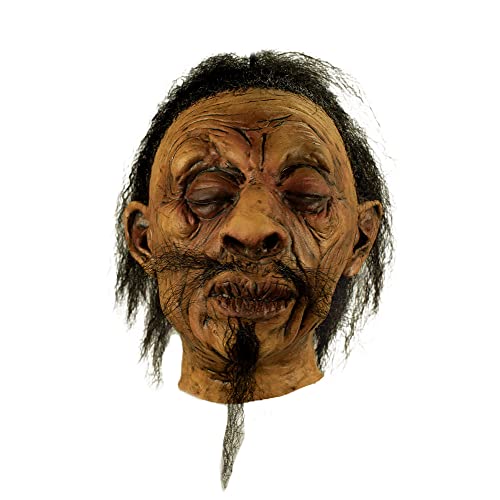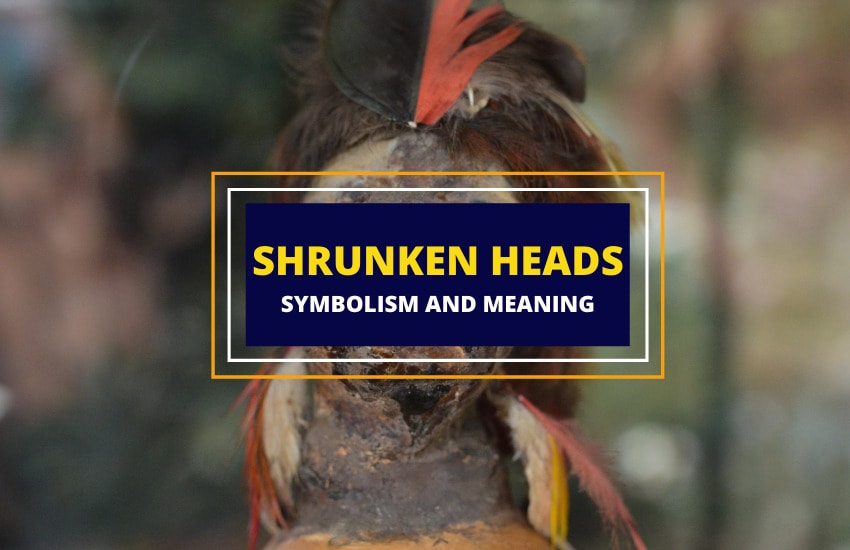
Table of Contents
Shrunken heads, commonly referred to as tsantsas, played a role in ancient ceremonial rituals and traditions throughout the Amazon. Shrunken heads are decapitated human heads that have been reduced to the size of an orange.
For decades, several museums around the world displayed these rare cultural artifacts, and most visitors marveled at them and feared them. Let’s find out more about these shrunken heads, along with their cultural and religious significance.
Who Shrunk the Heads?
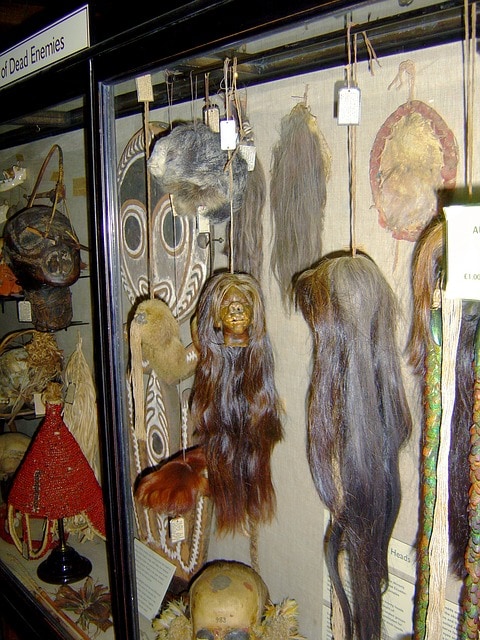
Ceremonial head shrinking was a common practice among the Jivaro Indians in northern Peru and eastern Ecuador. Predominantly produced in Ecuador, Panama, and Columbia, this ceremonial tradition associated with human remains was practiced until the mid-20th century.
The Jivaro were members of the Shuar, Wampís/Huambisa, Achuar, Awajún/Aguaruna, as well as Candoshi-Shapra Indian tribes. It is said that the ceremonial head-shrinking process was done by the men of the tribe and that the method was handed down from father to son. The full adult status wasn’t given to a boy until they had successfully learned the head shrinking techniques.
The shrunken heads came from the enemies the men slew during combat. The spirits of these victims were thought to have been trapped by fastening the mouth of the shrunken head with pins and string.
How the Heads Were Shrunk
The process of shrinking a head was long and involved several ritualistic steps. The entire shrinking process was accompanied by dancing and rituals that would sometimes go on for days.
- First, to carry the severed head back from battle, a warrior would remove the head from the slain enemy, then thread his headband through the mouth and neck to make it easier to carry.
- Once back at the village, the skull would be removed and offered to the anacondas. These snakes were thought to be spiritual guides.
- The eyelids and lips of the severed head were stitched shut.
- The skin and hair were then boiled for a couple of hours to shrink the head to about a third of its original size. This process also made the skin darker.
- Once boiled, hot sand and stones were put inside the skin to cure it and help to mold it into shape.
- As a final step, the heads were held over a fire or rubbed with charcoal to blacken the skin.
- Once ready, the head would be worn on a rope around the warrior’s neck or carried on a stick.
How were the skull bones removed when shrinking heads?
Once the warrior was safely away from his enemies and had removed the head from the one he had slain, he would get on with the business of removing the unwanted skull bones from the skin of the head.
This was done during a feast of the victors amid much dancing, drinking, and celebration. He would make an incision horizontal with the nape of the neck between the lower ears. The resulting flap of skin would then be pulled upwards to the crown of the head then peeled down over the face. A knife would be used to cut the skin away from the nose and chin. The skull bones would be discarded or left for the anacondas to enjoy.
Why was the skin boiled?
Boiling the skin helped to shrink the skin a little, although this was not the main intention. Boiling helped to loosen any fat and cartilage inside the skin which could then be easily removed. The skin could then be packed with hot sand and rocks which provided the main shrinking mechanism.
Meaning and Symbolism of the Shrunken Heads
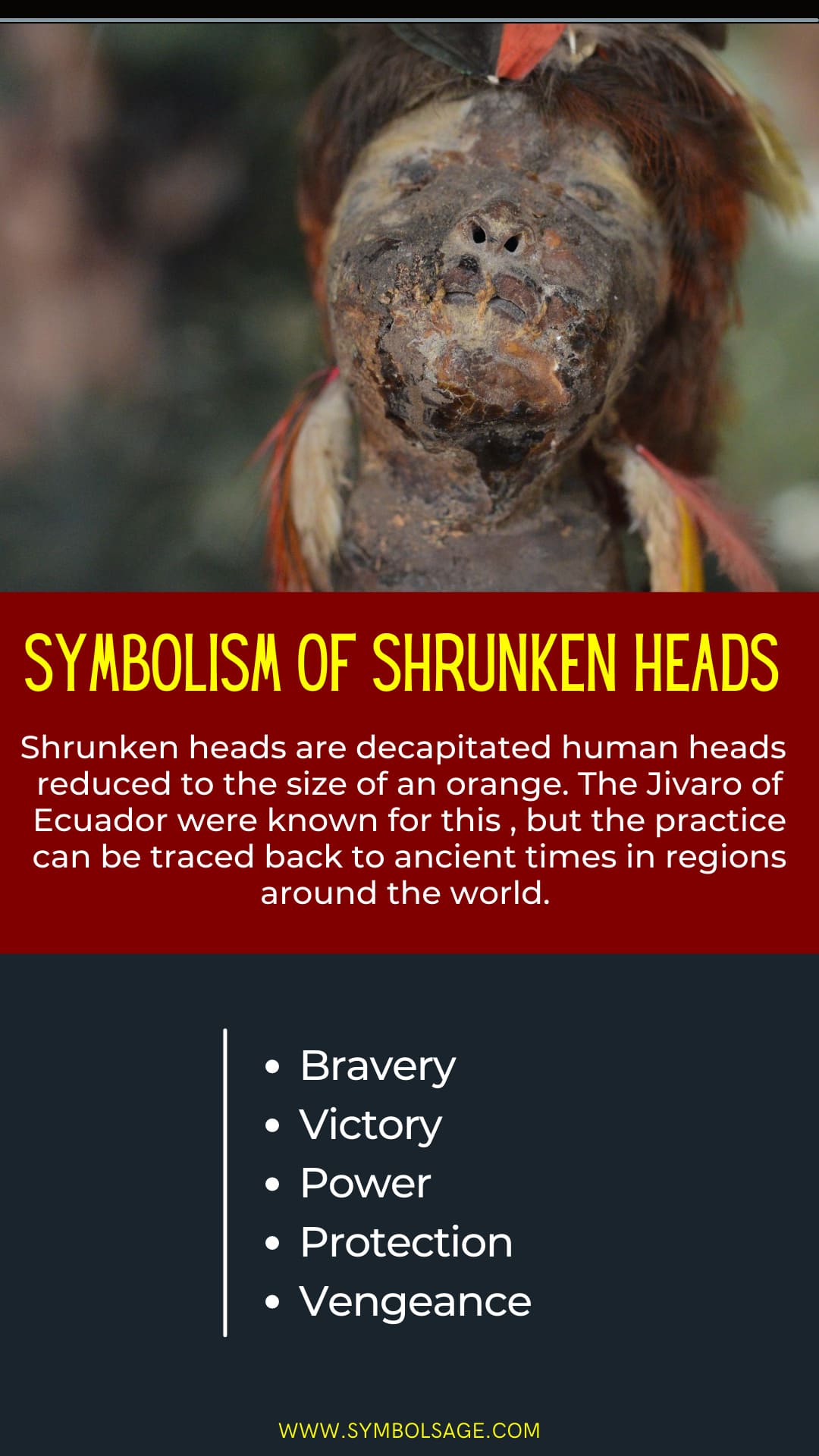
The Jivaro are known to be the most warlike people of South America. They fought during the expansion of the Inca Empire, and also battled the Spanish during the conquest. No wonder their cultural and religious traditions also reflect their aggressive nature! Here are some of the symbolic meanings of the shrunken heads:
Bravery and Victory
The Jivaro were proud that they had never really been conquered, so the shrunken heads served as valuable symbols of bravery and victory for the tribal warriors after a long tradition of blood feuds and revenge As war trophies, they were thought to appease the victor’s ancestral spirits.
Symbols of Power
In the Shuar culture, shrunken heads were important religious symbols that were believed to possess supernatural powers. They were thought to contain the spirit of the victims, along with their knowledge and skills. In this way, they also served as a source of personal power for the owner. While some cultures made powerful objects to kill their enemies, the Shuar killed their enemies to make powerful objects.
The shrunken heads were a talisman of the victor’s community, and their powers were believed to have been transferred to the victor’s household during the ceremony, which involved a feast with several attendees. However, the talismanic powers of tsantsas were thought to diminish within about two years, so they were only kept as keepsakes after that time.
Symbols of Vengeance
While other warriors fought for power and territory, the Jivaro fought for vengeance. If a loved one was killed and wasn’t avenged, they feared that their loved one’s spirit would be angry and bring misfortune to the tribe. For the Jivaro, killing their enemies wasn’t enough, so the shrunken heads served as a symbol of vengeance and proof that their loved ones had been avenged.
The Jivaro also believed that the spirits of their slain enemies would seek retribution, so they shrank their heads and shut their mouths to prevent the souls from escaping. Because of their religious connotations, decapitation and ceremonial head shrinking became significant in the Jivaro culture.
Below is a list of the editor’s top picks featuring Shrunken Heads.
History of Shrunken Heads
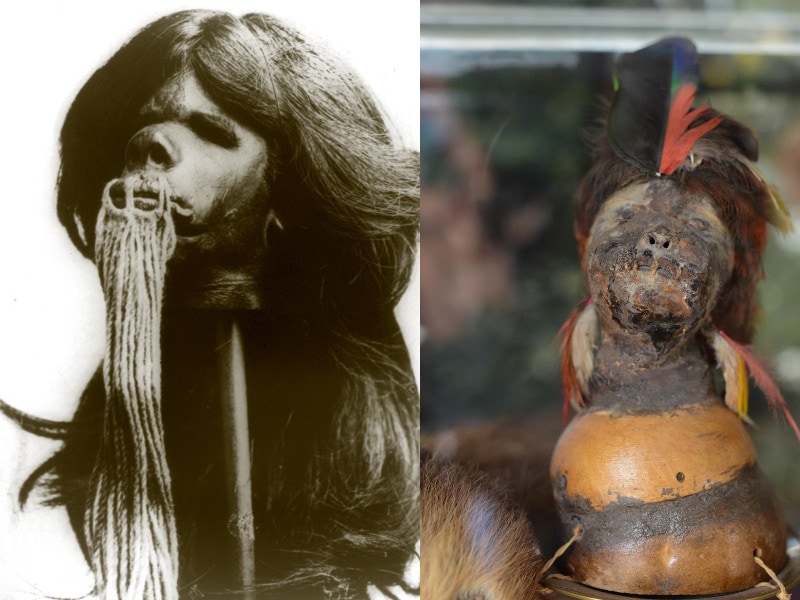
The Jivaro of Ecuador are headhunters that we hear about the most often, but the tradition of taking human heads and preserving them can be traced back to ancient times in various regions. Headhunting was common in cultures that believed in the existence of a soul which was thought to reside in the head.
The Ancient Tradition of Headhunting
Headhunting was a tradition pursued in ancient times in many countries all over the world. In Bavaria in Late Paleolithic times, decapitated heads were buried separately from bodies, which implied the significance of the head for the Azilian culture there.
In Japan, from the Yayoi times to the end of the Heian period, Japanese warriors used their spears or hoko for parading the severed heads of their slain enemies.
On the Balkan Peninsula, taking a human head was believed to transfer the soul of the dead to the slayer.
The tradition was continued in the Scottish marches until the end of the Middle Ages and also in Ireland.
Headhunting was also known in Nigeria, Myanmar, Indonesia, eastern Afghanistan, and throughout Oceania.
In New Zealand, the decapitated heads of enemies were dried and preserved to preserve the facial features and tattoo marks. The Aboriginal Australians also thought that the souls of their slain enemies entered the slayer. However, the strange tradition of shrinking the heads to the size of a fist was mainly only done by the Jivaro in South America.
Shrunken Heads and European Trading
In the 19th century, shrunken heads gained monetary value among Europeans as rare keepsakes and cultural items. Most people who owned tsantsas were willing to trade their talismans after their power had already been transferred. Originally, shrunken heads were produced for ceremonies by certain cultural groups. The demand for tsantsas quickly outgrew supply, which led to the creation of many fakes to meet demand.
The shrunken heads began to be made not only by the people in the Amazon but also by outsiders for trading purposes, resulting in inauthentic, commercial tsantsas. Most of these outsiders were medical doctors, mortuary technicians, and taxidermists. Unlike the ceremonial shrunken heads produced for talismanic powers, commercial tsantsas were only made for export to the European colonial market.
In some instances, shrunken heads were even made from the heads of animals like monkeys, goats, and sloths, as well as synthetic materials. Regardless of authenticity, they were exported throughout North America and Europe. However, commercial tsantsas didn’t have the same historical value as ceremonial tsantsas, as they were made only for collectors.
In Popular Culture
In 1979, a shrunken head was featured in the film Wise Bloods by John Huston. It was attached to a fake body and worshipped by one of the characters. However, it was later found out to be a real tsantsa—or a real human head.
For decades, the shrunken head had been displayed at Mercer University in Georgia. It had become a part of the university’s collection after the death of a former faculty member who had bought it while traveling in Ecuador in 1942.
It’s said that the shrunken head was bought from the Jivaro by trading for it with coins, a pocketknife, and a military insignia. It was borrowed from the university for the film’s props as the movie was filmed in Macon, Georgia, near the university. There are plans to return the head to Ecuador where it originated.
Are shrunken heads still made today?
While head shrinking was originally done for ceremonial and religious purposes, it later began to be done for trade purposes. The tribal people would trade them for westerners for guns and other items. Up until the 1930s, it was still legal to buy such heads and they could be obtained for about $25. The locals began using animal heads to trick tourists and traders into buying them. The practice was banned after 1930. Any shrunken heads obtainable on websites today are most probably fake.
In Brief
Shrunken heads are both human remains and valuable cultural items. They gained monetary value in the 19th century as rare keepsakes, which led to the creation of commercial tsantsas to meet rising demand.
For the Jivaro Indians, they remain a symbol of bravery, victory, and power, though the practice of ceremonial head shrinking probably ended in the mid-20th century. While the sale of such heads was made illegal in Ecuador and Peru in the 1930s, there don’t seem to be any laws against making them.







